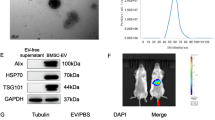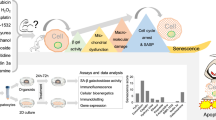Summary
The activation of hepatic stellate cells (HSCs) and their transformation to myofibroblasts are the key steps in the pathological progress of liver fibrosis. The transforming growth factor-β (TGFβ)/Smad pathway is involved in the proliferation and collagen synthesis of HSCs. This study aimed to examine the effect of the protease inhibitor MG132 on the signaling pathway of TGFβ/Smad in HSC-T6 cells and seek a novel therapeutic approach for liver fibrosis. The HSC-T6 cells were treated with MG132 at different concentrations (0–10 μmol/L). Cell proliferation was detected by MTT method. The mRNA and protein expression levels of TGFβ1, Smad3 and Smad7 were determined in HSC-T6 cells by real-time PCR and Western blotting, respectively, after treatment with MG132 at different concentrations (1, 2, 3 μmol/L) or RPMI1640 alone (serving as control). The results showed that MG132 could inhibit the proliferation of HSC-T6 cells in a dose-dependent manner, and the IC50 of MG132 was 6.84 μmol/L. After treatment with MG132 at 1, 2 or 3 μmol/L for 24 h, the mRNA expression levels of TGF-β1 and Smad3 were significantly decreased (P<0.05), but the Smad7 mRNA expression had no significant change (P>0.05). There was also a significant decrease in the protein expression level of TGF-β1 and Smad3 (P<0.05). However, the expression of Smad7 protein was substantially increased when compared with the control group (P<0.05). It was concluded that the inhibition of TGFβ/Smad pathway in HSC-T6 cells by MG132 can reduce the production of profibrosis factors (TGFβ1, Smad3) and promote the expression of anti-fibrosis factor (Smad7), suggesting that MG132 may become a potential therapeutic alternative for liver fibrosis.
Similar content being viewed by others
References
Friedman SL. Mechanisms of hepatic fibrogenesis. Gastroenterology, 2008,134(6): 1655–1669
Friedman SL. Hepatic fibrosis-overview. Toxicology, 2008,254(3):120–129
Arthur MJ. Reversibility of liver fibrosis and cirrhosis following treatment for hepatitis C. Gastroenterology, 2002,122(5):1525–1528
Iredale JP, Benyon RC, Pickering J, et al. Mechanisms of spontaneous resolution of rat liver fibrosis. Hepatic stellate cell apoptosis and reduced hepatic expression of metalloproteinase inhibitors. J Clin Invest, 1998,102(3): 538–549
Iredale JP. Hepatic stellate cell behavior during resolution of liver injury. Semin Liver Dis, 2001,21(3):427–436
Kavsak P, Rasmussen RK, Causing CG, et al. Smad7 binds to Smurf2 to form an E3 ubiquitin ligase that targets the TGF beta receptor for degradation. Mol Cell, 2000,6(6):1365–1375
Schuppan D, Afdhal NH. Liver cirrhosis. Lancet, 2008,371(9615):838–851
Kisseleva T, Brenner DA. Mechanisms of fibrogenesis. Exp Biol Med, 2008,233(2):109–122
Flanders KC. Smad3 as a mediator of the fibrotic response. Int J Exp Pathol, 2004,85(2):47–64
Pfaffl MW. A new mathematical model for relative quantification in real-time RT-PCR. Nucleic Acids Res, 2001,29(9):e45
Wang C, Kim T, Gao D, et al. Rapid high-yield mRNA extraction for reverse-transcription PCR. J Biochem Biophys Methods, 2007,70(3):507–509
Kaimori A, Potter J, Kaimori JY, et al. Transforming growth factor-β1 induces an epithelial-to-mesenchymal transition state in mouse hepatocytes in vitro. J Biol Chem, 2007,282(30):22089–22101
Inagaki Y, Okazaki I. Emerging insights into transforming growth factor-β/Smad signal in hepatic fibrogenesis. Gut, 2007,56(2):284–292
Dooley S, Ten Dijke P. TGF-β in progression of liver disease. Cell Tissue Res, 2012,347(1):245–256
Uemura M, Swenson ES, Gaca MD, et al. Smad2 and Smad3 play different roles in rat hepatic stellate cell function and α-smooth muscle actin organization. Mol Biol Cell, 2005,16(9):4214–4224
Wang J, Maldonado MA. The ubiquitin-proteasome system and its role in inflammatory and autoimmune diseases. Cell Mol Immunol, 2006,3(4):255–261
Liu X, Wen FQ, Kobayashi T, et al. Smad3 mediates the TGF-beta-induced contraction of type I collagen gels by mouse embryo fibroblasts. Cell Motil Cytoskeleton, 2003,54(3):248–253
Dooley S, Hamzavi J, Breitkopf K, et al. Smad7 prevents activation of hepatic stellate cells and liver fibrosis in rats. Gastroenterology, 2003,125(1):178–191
Zhang F, Laiho M. On and off: proteasome and TGF-beta signaling. Exp Cell Res, 2003,291(2):275–281
Schnabl B, Kweon YO, Frederick JP, et al. The role of Smad3 in mediating mouse hepatic stellate cell activation. Hepatology, 2001,34(1):89–100
Author information
Authors and Affiliations
Corresponding author
Additional information
This work was supported by a grant from the Natural Science Foundation of Hubei Province (No. 2010CHB00401).
Rights and permissions
About this article
Cite this article
Ren, Zp., Sun, Lp., Xia, Yc. et al. Effect of the protease inhibitor MG132 on the transforming growth factor-β/Smad signaling pathway in HSC-T6 cells. J. Huazhong Univ. Sci. Technol. [Med. Sci.] 33, 501–504 (2013). https://doi.org/10.1007/s11596-013-1149-0
Received:
Revised:
Published:
Issue Date:
DOI: https://doi.org/10.1007/s11596-013-1149-0




